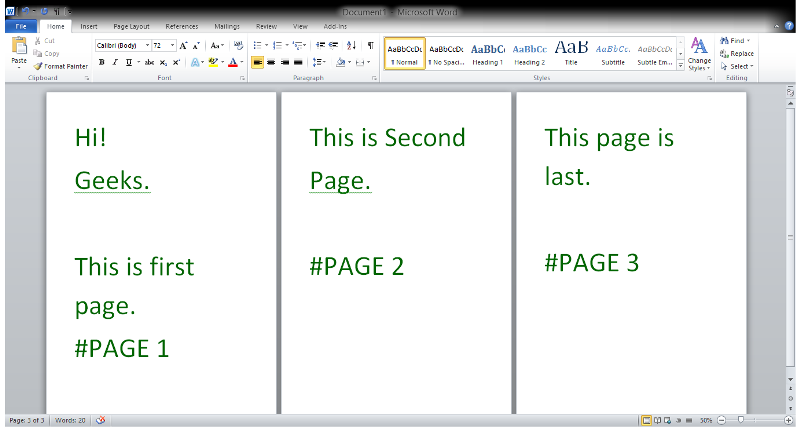Mastering Page Breaks in Microsoft Word: A Comprehensive Guide

Page breaks play a crucial role in document formatting, enabling users to control the layout and structure of their Microsoft Word documents with precision. Whether you’re preparing a report, crafting a thesis, or designing a brochure, knowing how to insert page breaks effectively is essential for achieving a professional and polished look. In this extensive guide, we’ll explore the intricacies of inserting page breaks in Microsoft Word, empowering you with the knowledge and skills to navigate your documents with confidence and finesse.
Understanding the Importance of Page Breaks:
Before delving into the practical aspects of page breaks, it’s essential to understand their significance in document design. Page breaks serve as boundaries that separate content into distinct pages, allowing for better organization, readability, and visual appeal. By strategically inserting page breaks, you can control where one page ends and another begins, ensuring that your document flows smoothly and looks polished. Page breaks are particularly useful for creating title pages, chapter divisions, or ensuring that specific content starts on a new page for better presentation.
Basic Page Break Insertion:
Inserting a page break in Microsoft Word is a straightforward process that can be accomplished using the “Page Break” tool. Here’s how to do it:
- Navigate to the Insert Tab:
- Open Microsoft Word and navigate to the “Insert” tab located in the top menu bar.
- Click on “Page Break”:
- In the “Insert” tab, locate the “Page Break” button. Click on this button to insert a page break at the current cursor position.
- Verify Page Break:
- After inserting the page break, you’ll notice that the content following the cursor position moves to the beginning of the next page. This indicates that the page break has been successfully inserted.
Advanced Page Break Options:
While the basic page break insertion suffices for most scenarios, Microsoft Word offers advanced options and customization features to enhance page break functionality. Here are some additional features you may explore:
- Section Breaks:
- In addition to page breaks, Word offers section breaks that allow for more granular control over document formatting. Section breaks enable users to change page orientation, apply different headers and footers, and control page numbering within specific sections of the document.
- Page Break Before Paragraph:
- Word allows users to insert a page break before a specific paragraph, ensuring that the paragraph starts on a new page. To insert a page break before a paragraph, place the cursor at the beginning of the paragraph, navigate to the “Layout” tab, click on “Breaks,” and select “Page” from the dropdown menu.
- Page Breaks in Tables:
- When working with tables in Word, inserting page breaks can be slightly different. If you need to force a table to start on a new page or ensure that a table doesn’t split across pages, place the cursor inside the table, navigate to the “Layout” tab, click on “Properties,” and select the “Row” tab. Check the box next to “Allow row to break across pages” to prevent the table from splitting across pages.
Best Practices for Page Break Usage:
While page breaks offer flexibility and control in document layout, it’s essential to use them judiciously and in accordance with best practices. Here are some tips to consider:
- Consider Readability:
- Use page breaks strategically to enhance readability and comprehension. Avoid breaking content in the middle of paragraphs or sections, as this can disrupt the flow of the text and confuse readers.
- Test for Compatibility:
- When sharing or exporting your document, ensure that page breaks are compatible with the intended output format. Some page break formatting options may not translate well to certain file formats or viewing platforms.
- Review Document Structure:
- Before finalizing your document, review the overall structure and layout to ensure that page breaks are placed appropriately. Pay attention to title pages, chapter divisions, and other critical sections where page breaks may be necessary for clarity and organization.
Conclusion:
Page breaks in Microsoft Word are indispensable tools for controlling the layout, structure, and presentation of your documents. By mastering the basic insertion process, exploring advanced options, and adhering to best practices for page break usage, you can create professional-looking documents tailored to your needs. Whether you’re composing reports, designing presentations, or formatting academic papers, page breaks offer versatility and flexibility to enhance the readability and visual appeal of your content. So, the next time you embark on a document creation journey in Word, remember to leverage the power of page breaks to achieve polished and professional results that captivate your audience.




